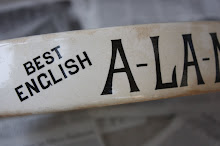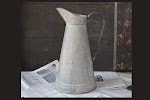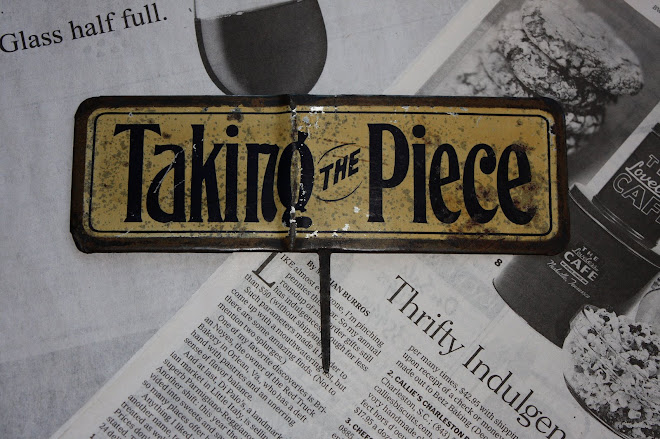
This is an example of a Victorian English glass and cast iron lantern cloche, c.1870 - 80. Sometimes referred to as handlights or even hand glasses, these were quintessential elements in a Victorian garden – in effect robust miniature greenhouses designed to protect plants from wind and frost. This one is a large example and has a rarer form – an octagonal base with a removable pyramidal dome top with a handle -the more common form being a square lower section with a pyramidal top. These days, striking examples such as this one tends to serve a more decorative function inside the home. It easily becomes a focal point - adding interest, drama and grand scale to a room or display. And seldom do they turn up in condition as good as this. This one has a cast iron frame with glass panes that are held into place by casement putty – early 20th century examples had zinc frames secured by clips rather than putty. As working tools, repairs to the glass were often necessary - broken glass was either completely replaced, or in times of thrift, a section of the damaged pane was removed and replaced. Both kinds of working repairs are evident on this cloche.

The classic glass bell shaped cloches originated in France several centuries ago but became popular gardener’s tools in the 18th and 19th centuries. They were hand-blown, semi-globular or cylindrical forms with applied knob handles and sometimes a rolled rim at the base.
 The glass often contained air bubbles, inclusions and striations. It’s not unusual to find these with their knob handles sliced off at the very tip as knobs were thought to hinder the diffusion of heat and light. And green colored glass was advertized as a better choice for some plants. Today, much of their beauty and appeal lies in their organic and imperfect forms – each one is unique.
The glass often contained air bubbles, inclusions and striations. It’s not unusual to find these with their knob handles sliced off at the very tip as knobs were thought to hinder the diffusion of heat and light. And green colored glass was advertized as a better choice for some plants. Today, much of their beauty and appeal lies in their organic and imperfect forms – each one is unique.





No comments:
Post a Comment